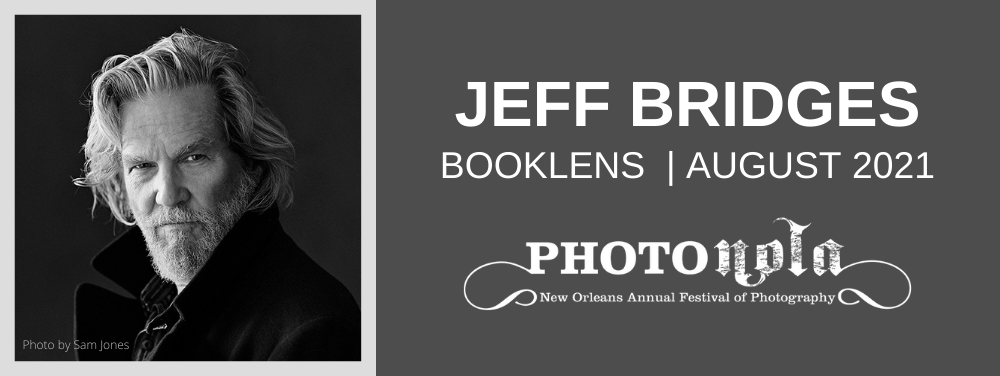In this August’s BookLENS, PhotoBOOK Fair team member, photographer, and columnist Jonathan Blaustein interviews renown actor, musician, and photographer Jeff Bridges:
Jeff Bridges is more than an actor, or an artist.
For Americans of a certain generation, the 1998 Coen Brothers’ film “The Big Lebowski” is a cultural touchstone, much as Baby Boomers worshiped “The Godfather,” or Zoomers love TikTok dance videos.
I can’t tell you how many times I’ve watched Jeff Bridges as The Dude, (Jeff Lebowski,) over the years, and when my BookLENS colleagues asked who’d be at the top of my dream-interview list, Jeff Bridges was the only answer.
He’s an accomplished photographer, with two books published by powerHouse, and as I already had a copy of “Jeff Bridges: Pictures Volume Two,” Jeff was graciously willing to answer some questions for us about his art, creative practice, and long career as an actor.
I can’t thank Jeff and his team enough. Hope you enjoy it!
–Jonathan Blaustein
Purchase Jeff Bridges: Pictures Volume Two
Jonathan Blaustein: What are some of your favorite creative outlets these days, beyond photography and acting?
Jeff Bridges: Well, it’s funny with all this time on your hands with the Covid shutdown and everything— seems there’d be a lot of time for creative stuff. I find that I struggle being creative in these times. Grass is always greener— when you’re busy you say “I wish I had the time to do some creative stuff,” but when I have that time I don’t seem to be inspired to do much. I did try to play a trick on myself and say “Jeff—I know you don’t feel like it— just go down and get some clay in your hands and do some ceramics.” So I did that and found that I got in the creative zone and that was a good idea. Occasionally I’ll do that with my music as well. And pick up the guitar, even though I don’t feel like it, write a song and see what happens.
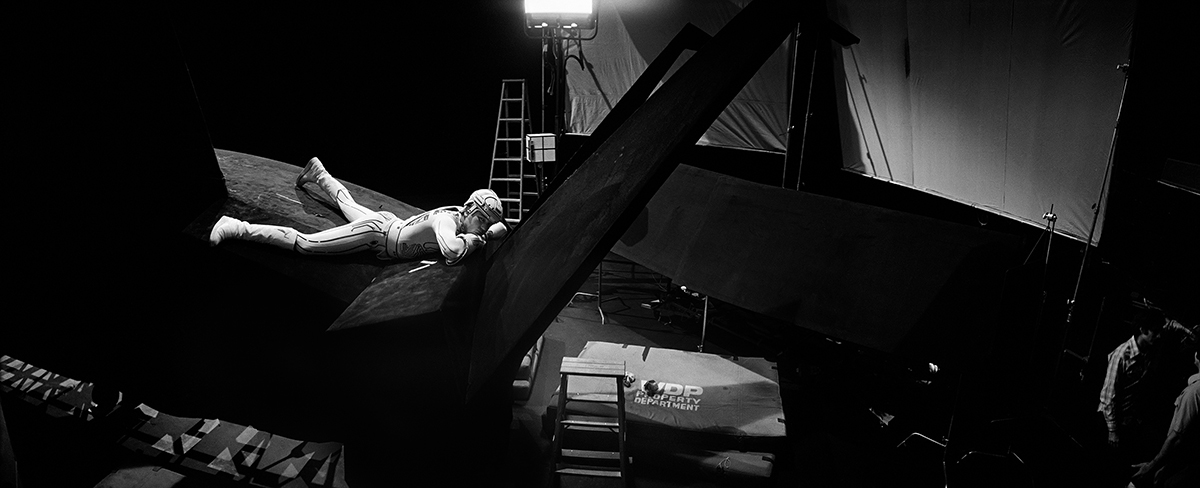
Blaustein: Do you shoot photos every day on a film set, or only when the mood strikes you?
Bridges:Pretty much when the mood strikes me and it often strikes me everyday when I’m working on a film set. But not always. It’s a bit frustrating when I don’t have the camera on me and I see a great opportunity for a shot. I am into taking pictures on the set but often I miss some great opportunities. But I’m not there to take pictures. I’m there to do some acting. My acting always trumps my photography when I’m on a movie set.
Blaustein: What is it like to have one of your creative outlets so intertwined with another?
Bridges: Well, that kind of gets into the last question. Sometimes it’s frustrating because, like I said, I’m there to act, not take pictures. Although, who knows— maybe I am there to take pictures, too. But the acting is what I’m hired on to do so that’s what I pay most of my attention to. It’s fascinating to have these two creative outlets so intertwined with one another. I really enjoy it. They have to do with each other in the sense that often when I’m making a film and I’ll watch the film it will have a home movie quality to it. I’ll remember the making of it as much as being able to follow the story of the film. The photos I take during the making of the film— especially if I make one of the small books I give to cast and crew— looking at those books really brings me back to the making of the film and that puts a smile in my heart.
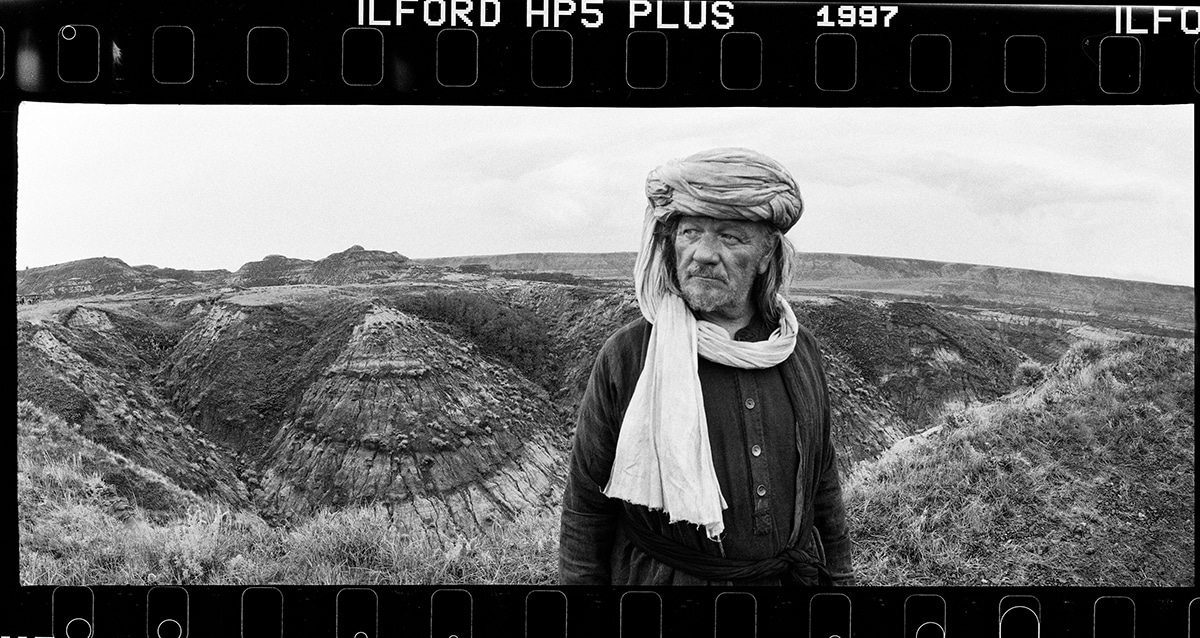
Blaustein: Did you intend for the full-bleed photos in the book, which rarely feature surrounding crew details, to have a different feel from the rest of the work?
Bridges: No, not really. I think the full bleed photos I choose seem to work in the full bleed mode. I work with a wonderful guy Ethan Boehme who helps me edit my photographs for my small books. It’s wonderful having a partner working on making those small books because editing, as you know, as a writer, is often the most difficult part of a project.
Blaustein: Both your website and the book feature pencil-drawn, cursive writing, and I was wondering how you came to include that in your creative style?
Bridges: Well, cursive writing, it’s interesting, I heard they’re no longer teaching that in school and I think that’s a shame because cursive writing is like drawing words as opposed to just printing letters. I thought the cursive writing lent itself to the artist expressing himself in another medium not only with the photographs but also drawing the letters.
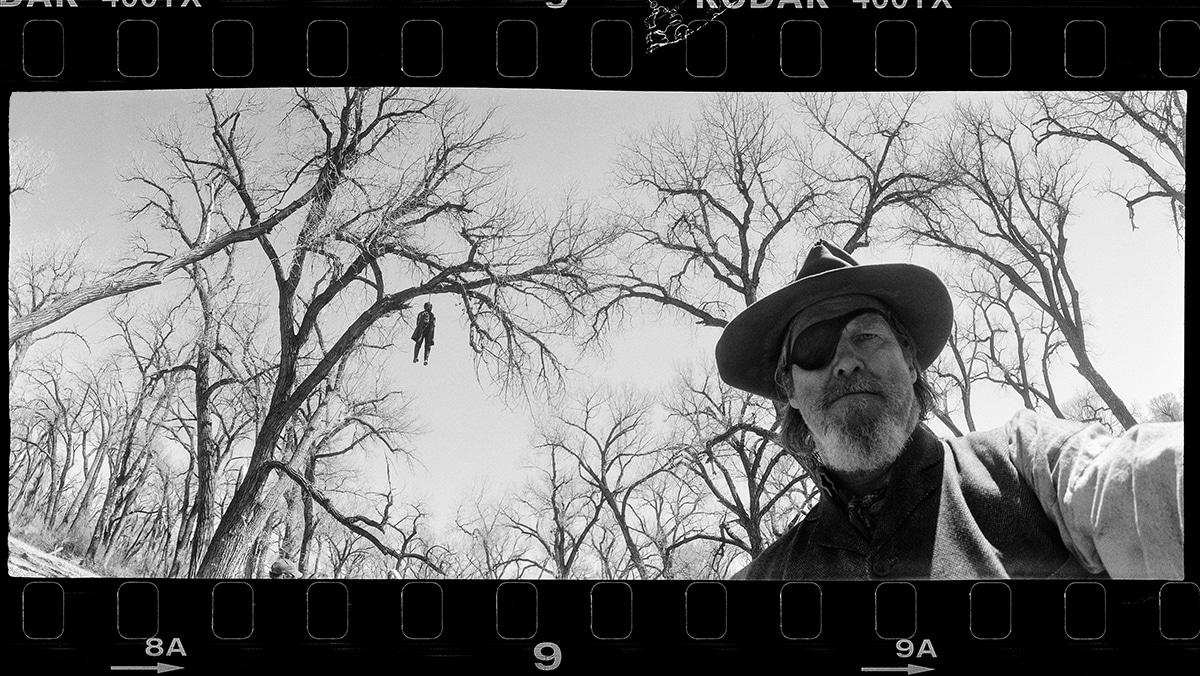
Blaustein: I’d be remiss if I didn’t ask a question which has bubbled in my imagination for decades: just how close are you to the Jeff Lebowski character you created?
Bridges: I’m pretty damn close. A lot of the clothes that I wore in that movie were my clothes. The Coen Brothers wrote that part specifically for me. I sure love that movie. It’s a wonderful movie. I’m so glad that I’m a part of it.
Blaustein: As a long-time New Mexican, I know you’ve worked here before, in “Crazy Heart,” “True Grit,” and “Hell or High Water,” so I was curious what you thought of the “Land of Enchantment?”
Bridges: Oh, I just love the Land of Enchantment! It’s interesting for all three movies— I think I stayed in the same place that created a sort of connection between all those films. The Land of Enchantment— the light is so beautiful, the people, the history, the geography, and the geology. I just love that state. It’s wonderful working there.
Blaustein: Speaking of “True Grit” and “Hell or High Water,” do you have any plans to work again with the Coen Brothers or Taylor Sheridan? (Any guest appearances on “Yellowstone” in the works?)
Bridges: No plans, but I love workin’ with both those guys and would love to do it again.
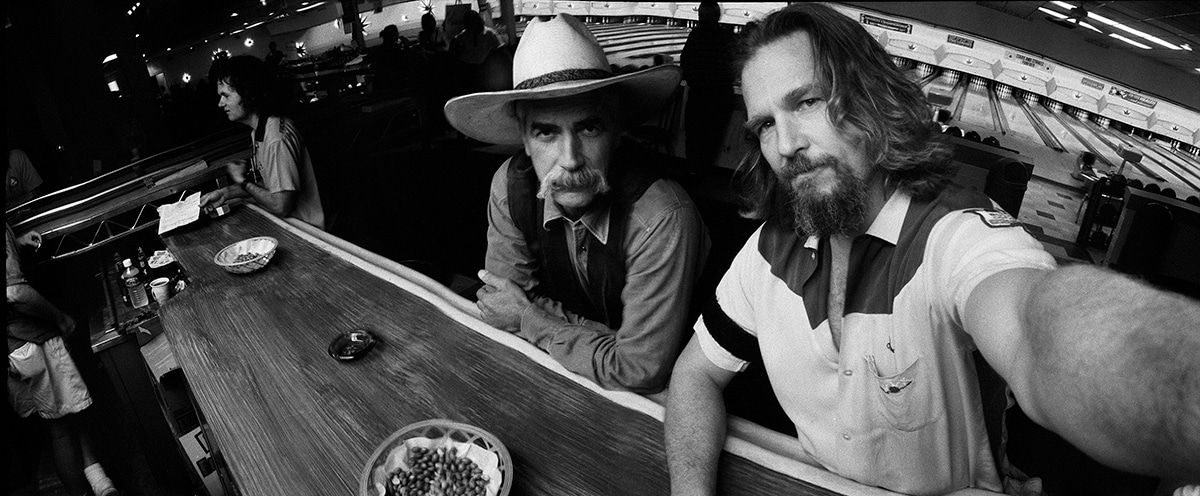
Blaustein: Have you seen any photographic exhibitions in the last few years that really impacted you?
Bridges: Well I don’t know about exhibits so much as books. I just got Mary Ellen Mark’s new book that Martin Bell, her husband, put together—Mary Ellen Mark: The Book of Everything. It’s a wonderful display of her talent and her photography. She was a mentor of mine during the making of a movie called American Heart that was based on a photo essay that she did for LIFE Magazine, I think back in the 80’s. Her husband made a wonderful documentary called Streetwise, based on her photo essay. And then we all worked together to make the movie American Heart. Mary Ellen Mark was our set photographer so I got to really work with her. Another photographer whose work I’ve been digging for many years—but also lately with his newest collection of work— is Richard Misrach. We went to high school together, he’s a dear friend. We share our photographs with each other. He’s really got an incredible eye and a very unique perspective to his photography.
Blaustein: What’s your favorite photo book of all time?
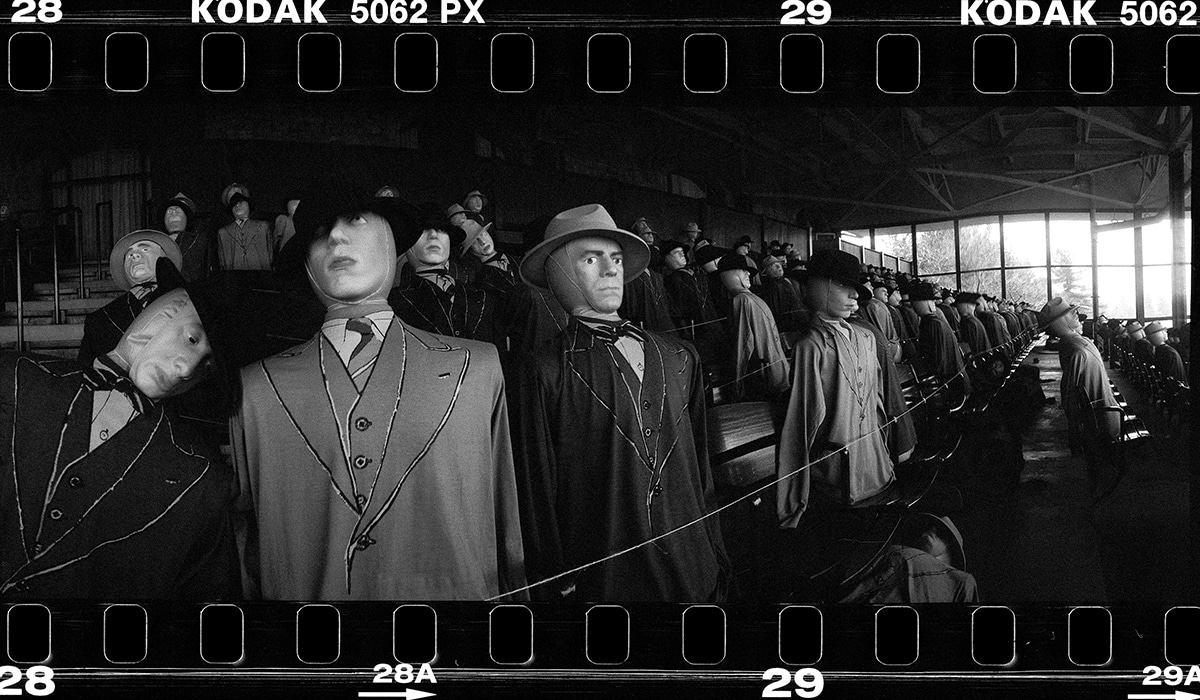
Bridges: Well, one that comes to mind is a photo book that my dad turned the whole family on to back when I was a kid— probably in the late 50’s, early 60’s called The Family of Man. It was photographs of what life is like for all different societies all around the world and my father said “this is really what it’s all about kids, we’re a family, we’re all in this together, we’ve got to look out for one another.” That impressed me.
Blaustein: As “Pictures Volume Two” presents your films chronologically, it struck me that you’ve made films set in the 19th Century, as well as the far future, so I was curious about what historical period you would visit if you had access to a time machine? (And it can be a DeLorean, if that helps your imagination.)
Bridges: I just read a biography about His Excellency: George Washington. That’s what they used to call him back in those days. That time seems wonderful. The beginning of our country— that seems like an interesting time period to visit. I read another interesting book recently, called The King and Queen of Malibu: The True Story of the Battle for Paradise, about the beginnings of Malibu, just around the turn of century. The Rindge’s had a ranch that included Topanga and Malibu about 20 or 30 miles along the coast. That must have been a wild time back in early Malibu days. I’d like to visit that time.
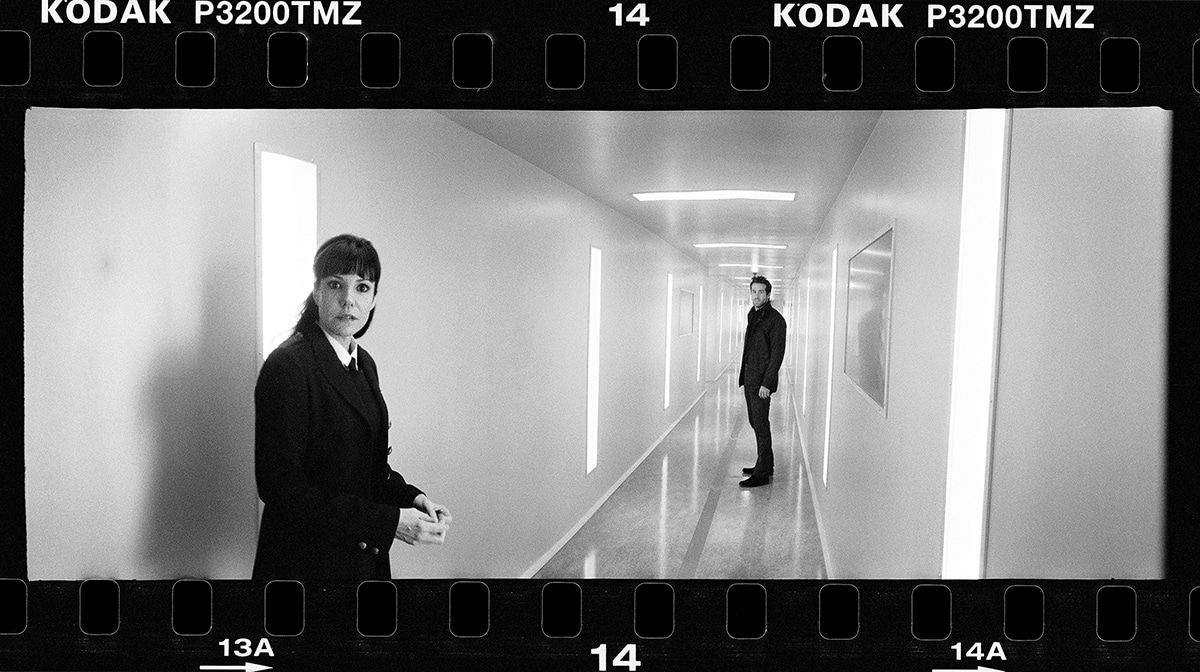
Blaustein: It’s well documented that you love your Widelux camera, with which you shot the photographs in this book, but do you own any slick, full-frame digital cameras?
Bridges: No, I don’t really own any other full-frame cameras. Of course, I do have an iPhone. I rarely take photographs with it. I recently used the video camera to record my grandkids learning to surf and that was fun. But, no, I really don’t take photographs much with my phone. But I have done some panoramic photos with my iPhone. But I don’t enjoy it as much as with my Widelux. There’s something about the Widelux. The 28 mm panning lens that I love and it does things that the digital camera can’t do. Such as some of that motion that you get because there’s no focus with the camera. You’re only focusing with your depth of field and sometimes you have a slow shutter speed. And in that case, when you’re shooting with a Widelux, some figures are blurred and slurred and some are still in focus. I’m not sure if a digital camera could do that... maybe it can... but I haven’t experimented with it. I haven’t even experimented too much with color photography with my Widelux. I’m really hooked into the black and white. I think a lot of that has to do with when I was a kid, and starting to do photography. I had a darkroom and I worked with black and white and I think that’s carried over into work with my Widelux camera.
Blaustein: In your many years on film sets, was there ever a crew member, or colleague, who was so fascinating that you continued photographing them again and again?
Bridges: Well, that would have to go to my stand-in, Loyd Catlett. I bet we hold a record for the number of movies that an actor and stand-in have done together. We’ve done probably at least 70 films together. I love my pictures of Loyd. They really demonstrate how people age. I’m looking at some of the early shots I’ve taken. He’s almost like a kid. And later on, I see, he’s an old man like me!
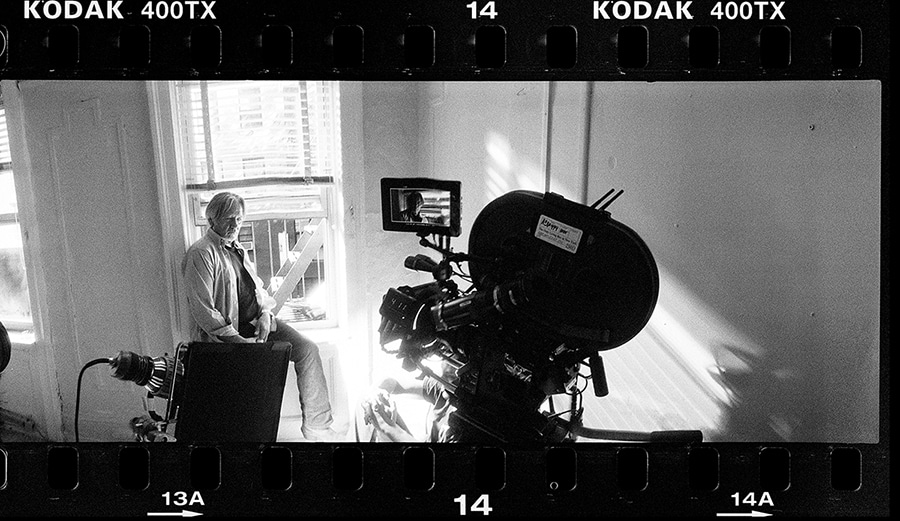
Blaustein: Coming out of a pandemic that has been so stressful for so many people, do you have any advice about how creativity and art can help people in difficult times?
Bridges: Yeah, well like I was saying, one of the things about art— you’ve just got to show up in front of your stuff, you know. If you’re a musician you’ve got to get your instrument in front of you, even if you don’t feel like it. Or like in my case, with ceramics, get some clay in your hands even if you don’t feel like it. Just do it. Show up. That’s about 99% of what creativity is all about. Just showing up with your creative self and your medium and hang out and play.
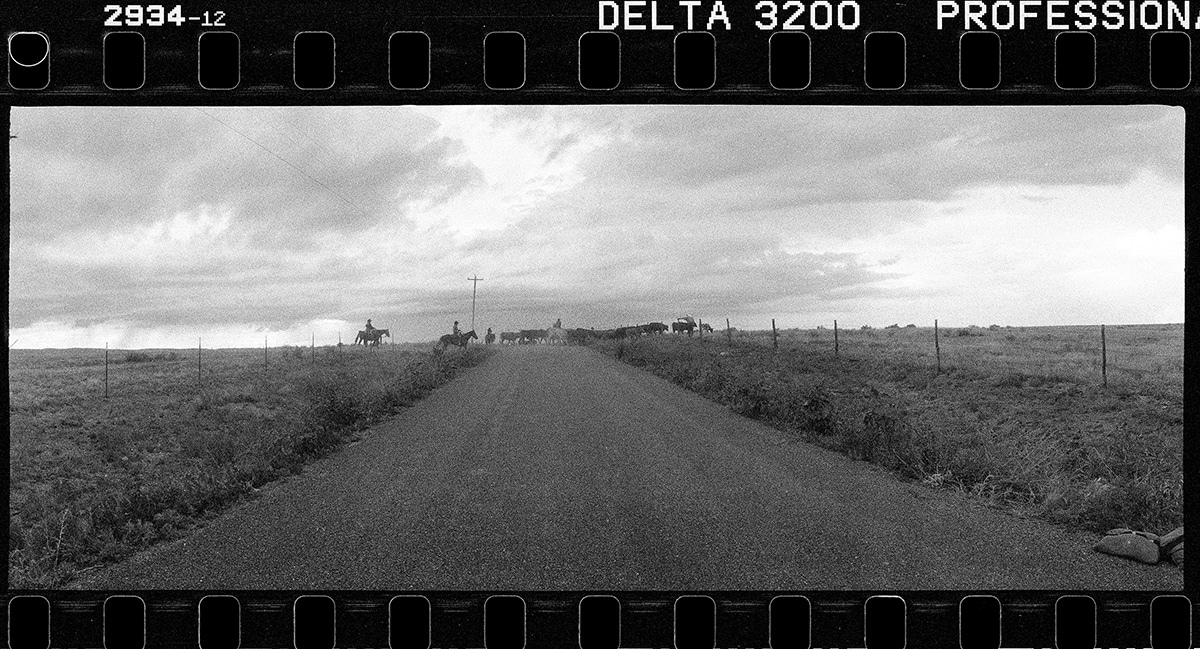
Blaustein: Do you have any plans for another photo book in the near future?
Bridges: No definite plans. I have taken photographs that don’t involve my movies. So maybe one day I’ll put out a book about that stuff.
Blaustein: Lastly, have you ever spent any late nights partying in NOLA, listening to great music on Frenchmen Street?
Bridges: No, I have not done that. Thanks a lot for thinking of me guys. Appreciate it. Look forward to seeing the article. Thanks for including me.
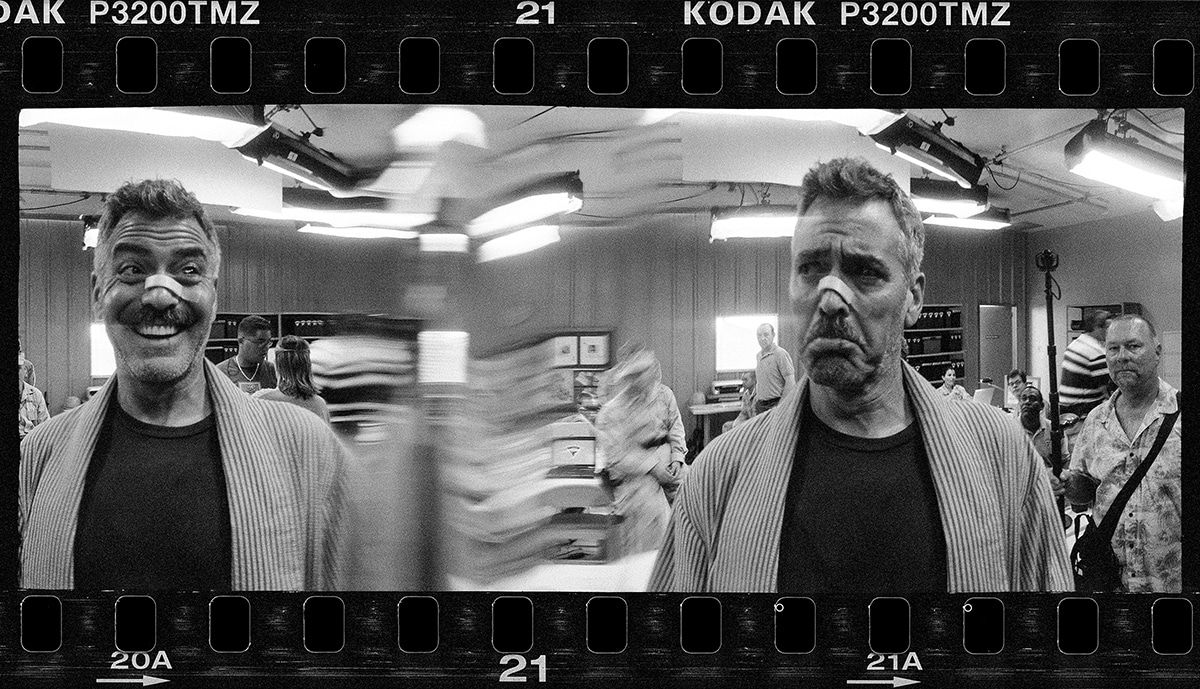
Proceeds from Jeff Bridges: Pictures Volume Two go to support the Motion Picture and Television Fund, an organization supporting entertainment industry members in living and aging well, with dignity and purpose, and in times of need.
The PhotoNOLA PhotoBOOK Fair is December 8, 2021 at The Times-Picayune | The New Orleans Advocate building. Publishers, photographers, and zine-makers can register for a table here.
